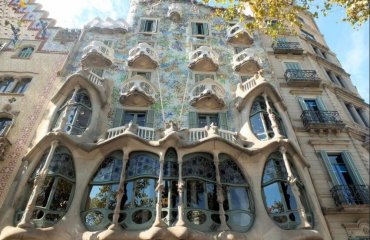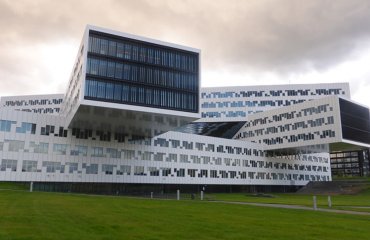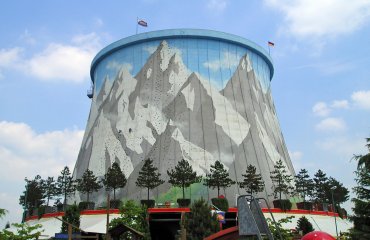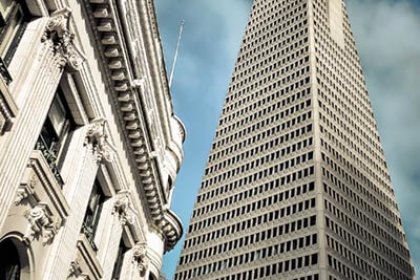
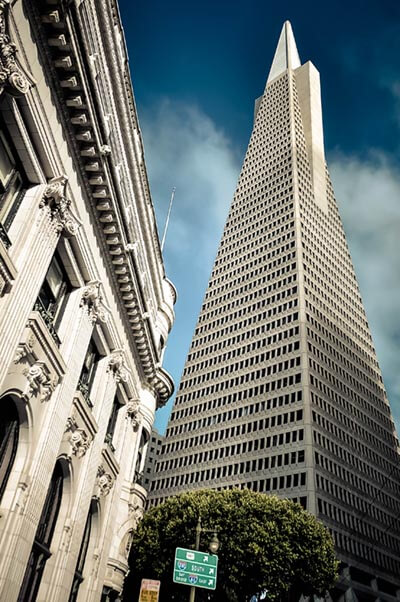
Old vs New II by Spiros Vathis is licensed under CC BY-ND 2.0
San Francisco’s Transamerica Pyramid looks more like a needle from some angles. Interestingly, the concept for this unusual structure sprouted from a very considerate thought.
As the story goes, in the late 1960s the Transamerica Corp was outgrowing its headquarters and needed to move. John Beckett, the current CEO was walking through the woods one day when he noticed how light filtered down through the trees. He decided that the new building should do the same and allow light to reach the street below.
Acclaimed architect William Pereira originally designed the Pyramid to be 1,200 feet high but that was revised to the current height of 835 feet to not obstruct views of the Bay from Nob Hill. When it was completed in 1972 it was the tallest building west of the Mississippi River. Today it’s still the tallest building in San Francisco.
Its reception was not all positive, critics compared it to a needle and a space rocket. However, over time the critics came to love the building and in 2009 the San Francisco Chronicle published the following, describing it as:
“An architectural icon of the best sort—one that fits its location and gets better with age.”
The building has several secrets, one being its “crown jewel,” a 6,000 watt light at the very top which is only lit on special occasions. The Pyramid is one of only a few high-rise buildings that generate their own power. It creates about 70% of its electricity and 100% of its heat and hot water. It’s also a building that can hear. Well, not really but it does have “ears.” The wedge shapes on the outside are actually for the second set of elevators and stairwells either of which you can take to the top.
This unique structure is symbolic of what people can do when they set their minds to it. Beckett had a dream for a building that would minimize its shadow and Pereira found a way to design such a building. In the years to come, it will be fascinating to see how new structures interact with their environments and the people who live there.
To see more of Peirera’s work, click here or explore another crazy building here!

